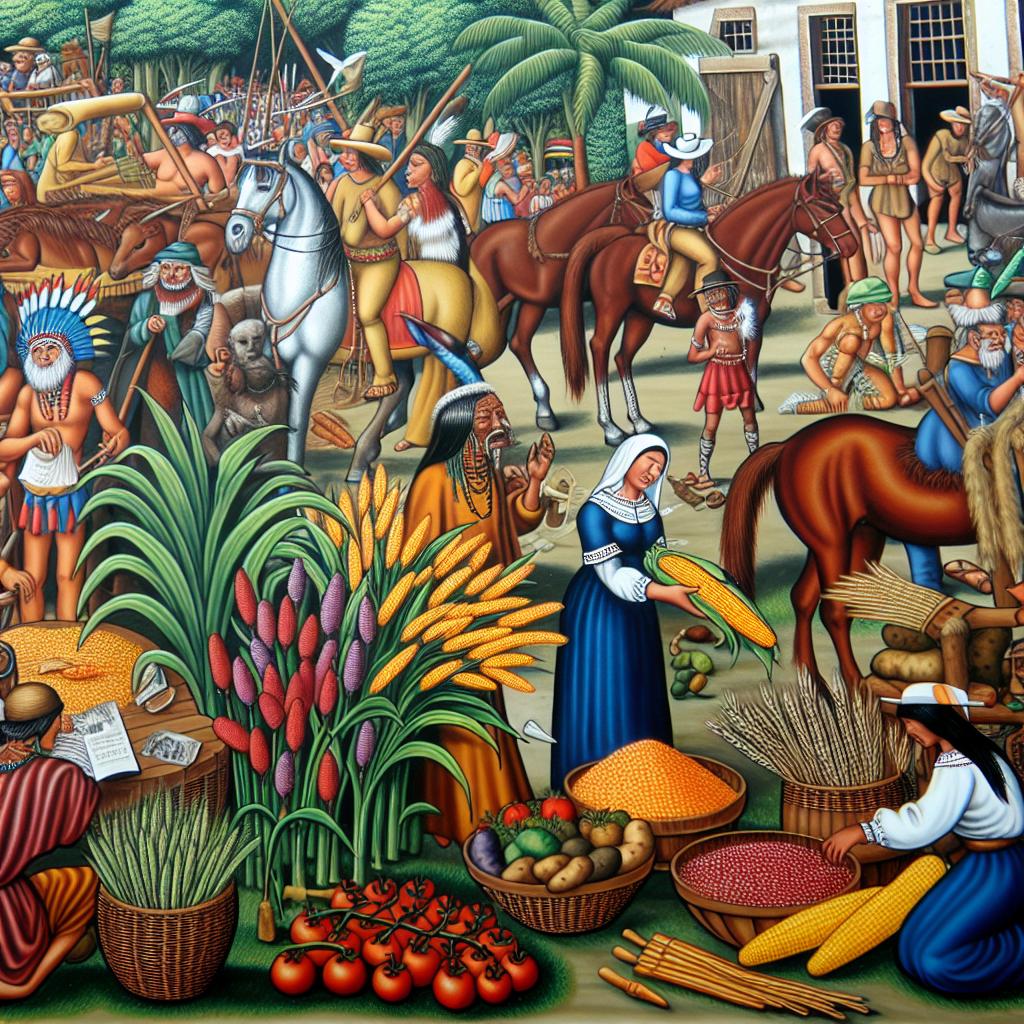The Columbian Exchange: A Fateful Encounter
The Columbian Exchange represents a significant turning point in world history, characterized by the extensive transfer of plants, animals, culture, human populations, technologies, and ideas that occurred between the Americas and the Old World following the voyages of Christopher Columbus in 1492. This large-scale and transformative event brought about profound changes to the global ecosystem, economy, and various societies, with particularly notable effects on the Native American populations.
Biological Exchange and Its Impacts
The essence of the Columbian Exchange lay in the unprecedented movement of biological entities across continents. For Native Americans, this meant encountering species, both flora and fauna, that were previously foreign to them. While the introduction of new plants and animals had the potential to be beneficial by diversifying diets and offering new resources, it simultaneously presented considerable challenges.
Disease emerged as the most tragic consequence for Native Americans. Old World pathogens, including smallpox, influenza, and measles, were unintentionally brought to the Americas, where the indigenous populations lacked immunity. This absence of prior exposure resulted in catastrophic pandemics, massively reducing Native American numbers and significantly altering the demographic landscape of the continent.
Agricultural Transformations
A notable aspect of the Columbian Exchange was the transformation of agriculture. European settlers introduced a variety of crops to the Americas, such as wheat, barley, and rice, contributing to a reshaping of agricultural practices and diets in the New World. Correspondingly, crops native to the Americas—such as maize (corn), potatoes, and tomatoes—were transported to Europe, where they gradually became staple elements of European diets and transformed agriculture there.
The introduction of livestock, including horses, cattle, and sheep, further revolutionized both transportation and agriculture. Horses, in particular, changed the dynamics of transportation and hunting, especially for Native American tribes in regions such as the Great Plains, where they became integral to nomadic lifestyles.
Cultural and Technological Impact
Beyond biological exchanges, the Columbian Exchange led to profound shifts in culture and technology. Europeans brought with them a range of new metal tools, weapons, and other technological advancements. Some Native American groups adopted these advancements, altering traditional practices. Nevertheless, while these technological exchanges could bring advantages, they also facilitated European domination in the Americas.
The influx of European cultural and religious practices often left an indelible mark on Native American communities. The introduction of Christianity by European missionaries sometimes resulted in the suppression of indigenous spiritual practices and languages, with long-lasting repercussions on cultural identity. As such, while the Columbian Exchange enriched global culture and knowledge in some respects, it also laid the groundwork for future conflicts, exploitation, and cultural homogenization.
The Lasting Legacy
The Columbian Exchange remains one of the most transformative phenomena in human history, affecting ecosystems and societies on a massive scale across multiple continents. Its profound impacts on Native American societies entailed extensive demographic shifts, substantial changes in agricultural practices, and widespread cultural transformations. The consequences of the Columbian Exchange have left lasting imprints that are still observable in various cultural and biological facets of the modern world.
Comprehending this complex historical period offers valuable insights into the interplay of factors that have shaped contemporary global societies. It underscores the interconnectedness of human societies and the environment, highlighting both the beneficial and detrimental aspects of cross-cultural exchanges. Understanding the Columbian Exchange extends beyond its historical occurrences, shedding light on broader themes of cultural interaction, adaptation, and transformation that continue to resonate today.
For those seeking further exploration of this topic, numerous resources are available through trusted historical archives or educational platforms. These resources provide a deeper understanding of the complexities and multitude of impacts associated with the Columbian Exchange, fostering a comprehensive appreciation of its pivotal role in shaping the history of the modern world.

